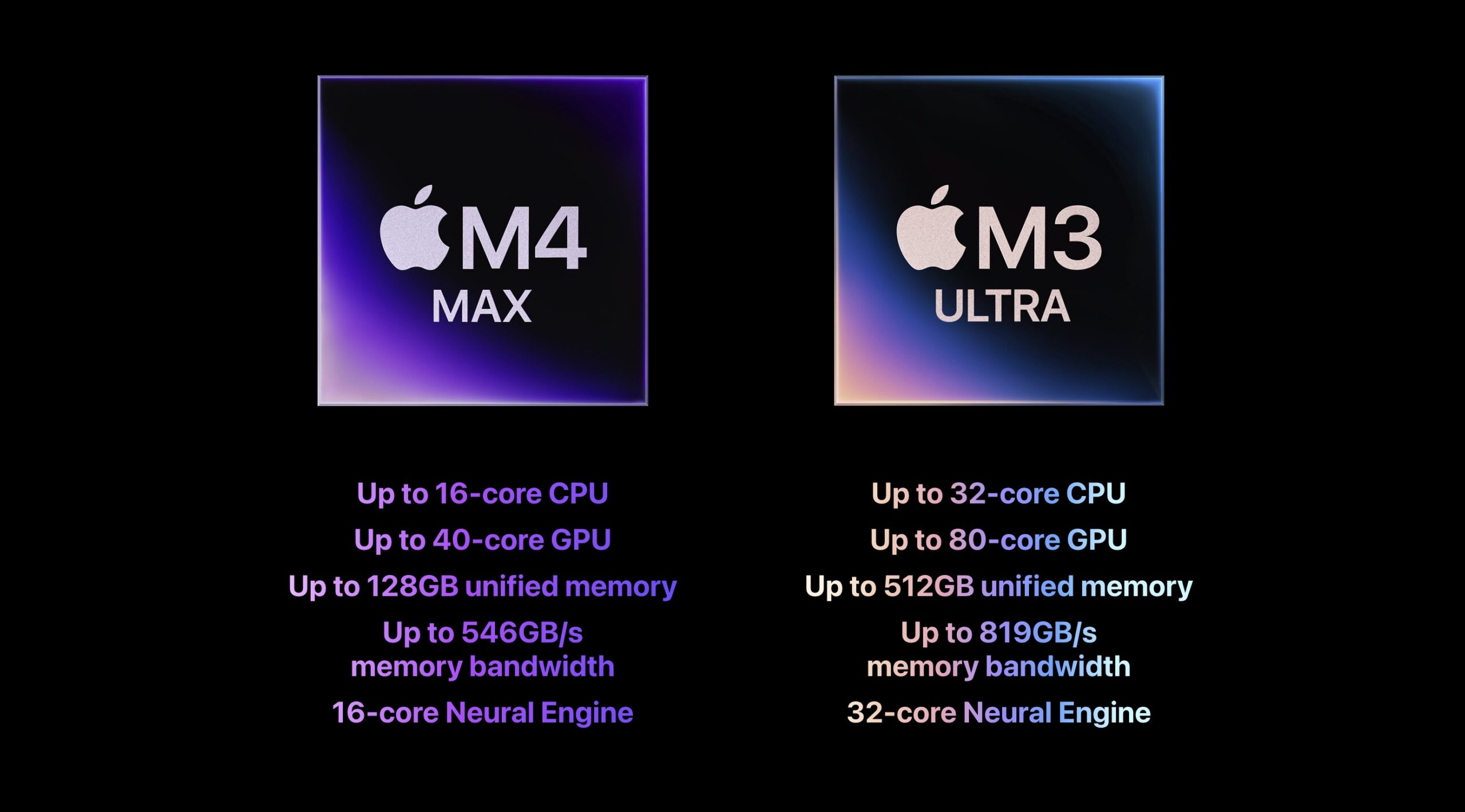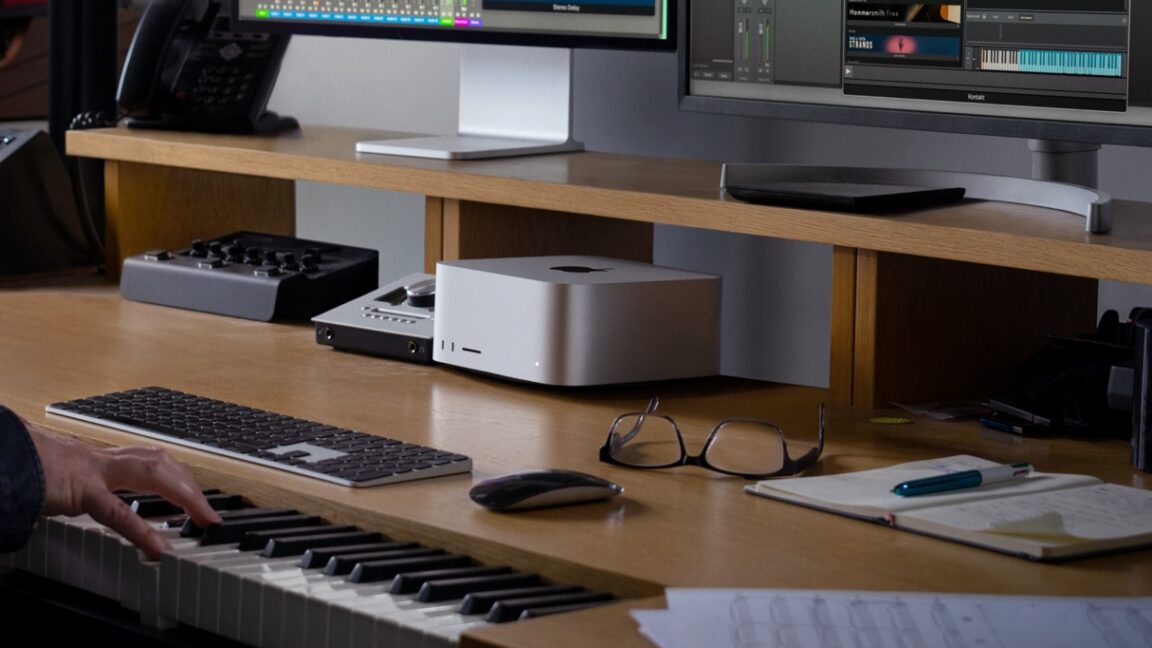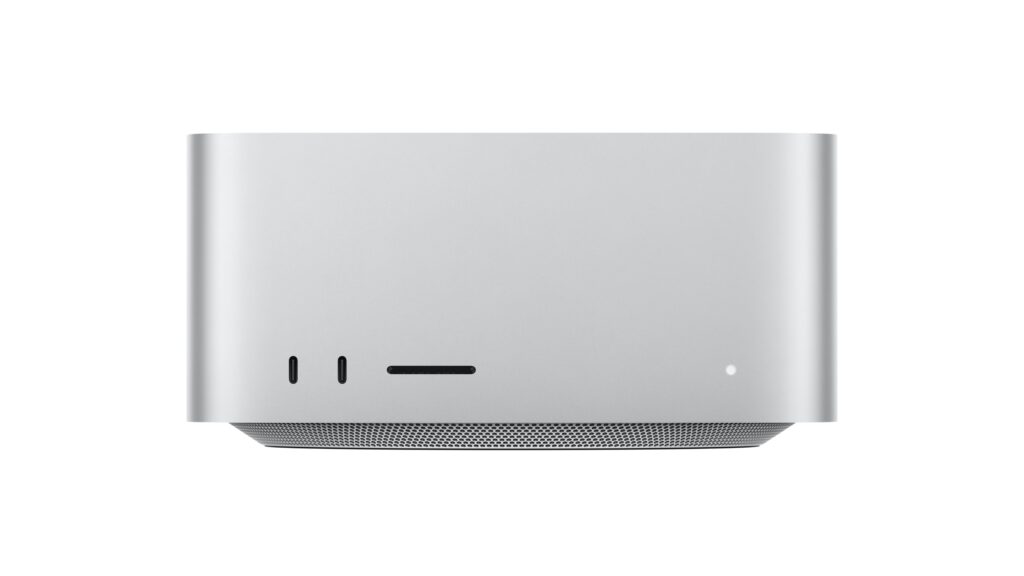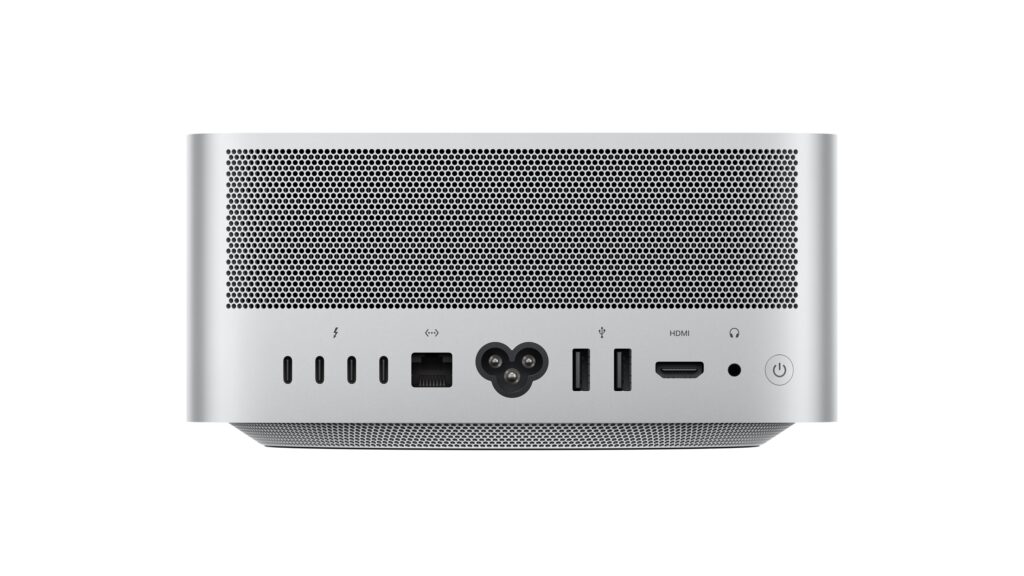Apple announced its first Mac Studio updates in nearly two years today, a few months after bringing the M4 and M4 Pro chips to the Mac mini.
As before, Apple offers a lower-end and a higher-end configuration of the Mac Studio. The lower-end model is pretty much what you expect: It gives you the same M4 Max processor Apple introduced in the high-end MacBook Pro last year. It has up to 16 CPU cores (10 P-cores, 4 E-cores), up to 40 GPU cores, and a 16-core Neural Engine.
The $1,999 base model comes with 14 CPU cores (10 P-cores, 4 E-cores), 32 GPU cores, 36GB of RAM, and 512GB of storage. That model's RAM can't be upgraded until you step up to the fully-enabled M4 Max, which also gets you 48GB of RAM for $300. From there, the desktop can be upgraded with either 64GB or 128GB of RAM, same as the MacBook Pro.

The high-end Mac Studio is a bit of a curveball. It comes with an M3 Ultra rather than an M4 Ultra; as with past Ultra chips, this is still essentially two M3 Max processors joined together with a silicon interposer to facilitate high-bandwidth communication. But it puts the high-end Studio in an odd position: It comes with more execution resources than the M4 Max does but is based on an older architecture.





 Loading comments...
Loading comments...
